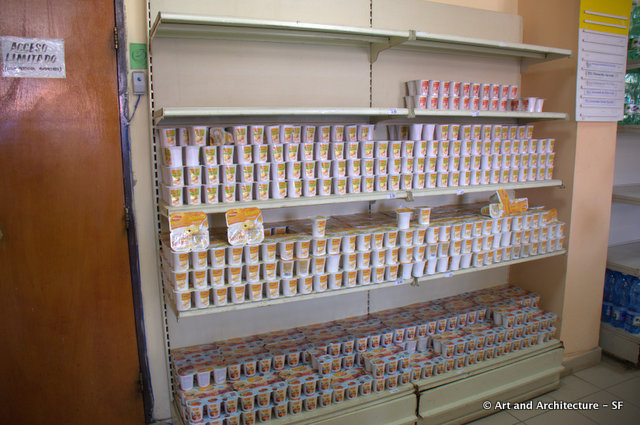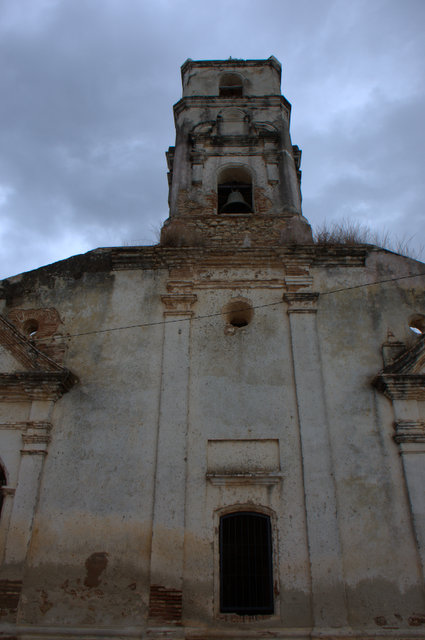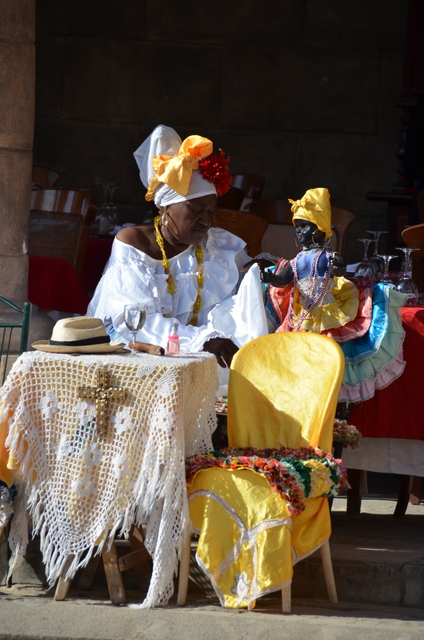January 2015
If you are traveling on a tour to Cuba you may see this statement on the top of your itinerary: “You are traveling on a government issued people-to-people license therefore free time to explore independently is not allowed.”
To further elucidate that statement, there are places you will be required to go and another requirement is that you spend a minimum of 6 (six) hours per day on a people-to-people interchange.
MONEY
In 2004 the Cuban government started penalizing the use of the US dollar so the CUC was created.
The exchange rate for the CUC (pronounced cook) also called the Chevito, is 87 to $100 and you will receive that rate no matter where in all of Cuba you exchange your money.
It is easy to determine the CUC vs. the Cuban Peso as the pesos have important people on the face of the bills and the CUCs have monuments on the faces of the bills.
SHOPPIING, NOT FOR YOU BUT FOR THE CUBANS
This is yogurt, yes, nothing but yogurt. This is typical of what you will see and it is caused by several things. First, Cuba has a distribution problem, so this store got all the yogurt for miles and miles around. Second, Cubans must purchase in Pesos not CUCs so it is often difficult for them to purchase items that are in stores that only take CUCs, thus, there is a shortage problem. While it may be on the shelf, it is essentially not available for purchase. It boggles the mind.
FOOD
Cuban food, a fusion of Spanish and Caribbean. is not spicy. There are really only three ingredients used for seasoning, garlic, pepper and onions, also lots and lots of salt. Some Cubans also use oregano and cumin, but on the whole Cuban food is mild.
Meals are traditionally served family style and always consist of black beans and rice. Forty years of food rationing has made meat items scarce for the average Cuban, but it usually consists of shredded pork or beef cooked slowly with a sauce.
Historically Cuba has always depended on food imports in order to meet its needs. A large reason for this is that nearly 30% of Cuba’s arable land is dedicated to growing sugar cane.
The fall of the Soviet Union caused a major food shortage in Cuba and in the 1990s the City of Havana authorized the used of vacant state property to produce food, creating “people’s plots” that occupy more than 2000 hectares.
SAFETY
Cuba is an extremely safe country, in fact the Police are required to leave their guns in the police station prior to heading home.
There is some crime, due to the classic fallout of poverty, but that happens around the world.
DEATH
The Colon Cemetery or the Cemeterio de Cristóbal Colón was founded in 1876; it covers 140 acres and has over 500 major mausoleums, chapels and family vaults. It holds 800,000 graves and 1 million internments. Since space is at a premium the bodies are buried for two years and then removed, boxed and placed in a storage building.
CHE GUEVARA
You can read all about the life and history of Che many places. The question is why do you see his face everywhere and not Castros. There is a true personality cult regarding Che in Cuba, but it is still considered wrong to encourage this concept. This is why you find almost no photos of either Fidel or Raul, it is okay to pay homage to the dead, but not the living.
MARRIAGE
While it is considered a Roman Catholic country, most Cubans live together, have children and never get married.
There is a saying in Cuba – Once you get married, it is all over. You will meet many people with wedding rings on, or maybe just the engagement ring, but they have never actually gone through the ceremony.
THE FLAG
The flag, known as the “Lone Star Flag”, was adopted April 11, 1869. The three blue stripes represent the three departments in which the island was divided at the time, the two white stripes signify the strength of the independence ideal. The red triangle is a symbol of equality among men and the blood that has been shed for freedom. The five pointed star is a sign of absolute liberty and independence.
RELIGION
Cuba is officially secular, however with religious freedom increasing since the 1980s the government amended the constitution in 1992 to drop their atheistic characterization.
There are two primary religions in Cuba, Catholicism (approximately 59%) and an African root religion, Santería. The only real way to know if one is of the Santeria faith is that they wear all white, although this is really only required in the first year of conversion. There is a very, very small population of Jews, Muslims and Bahá’í as well.
The Catholic Church in Cuba was originally for the very, very wealthy. The church supported Batista, so when the over throw occurred, the church, with its Spanish NOT Cuban fathers was persona non gratis. The prohibition was not so much against the church as against the Spanish institution that existed in the form of the church at the time.
This was the beginning of the Cuban people turning away from the church. While there are practicing Catholics in Cuba they are not as pious as they might have once been.
Since Argentinian Pope Francisco has been so active in the back room workings of bringing the United States and Cuba to the negotiation table, he is truly well liked in Cuba, but not nearly as much as Argentinian soccer stars.
ETC.
Some interesting odd considerations; Everyone that enters Cuba must have purchased medical insurance before entering. Water in Cuba is unsafe so always drink bottled water. You must hold back $25 CUC for an exit tax. (this is changing, however) MasterCard was reputed to be arriving in Cuba for Americans in March of 2015. (This still has not happened as of December 2015)







